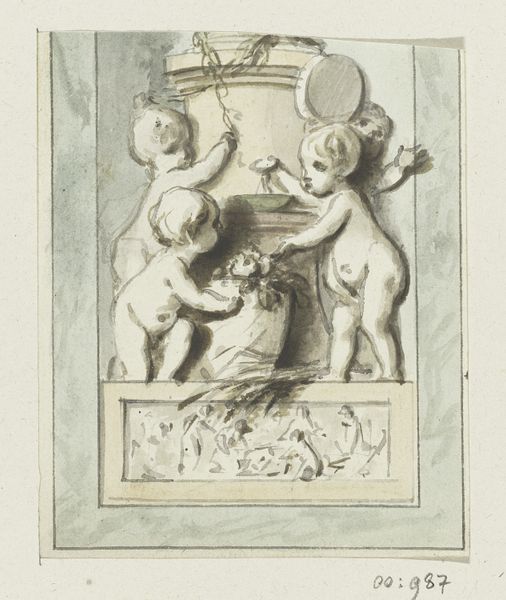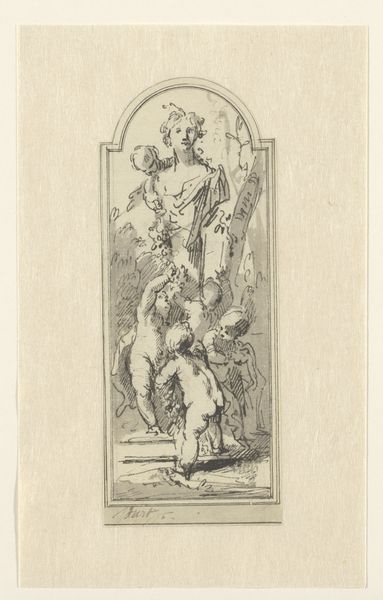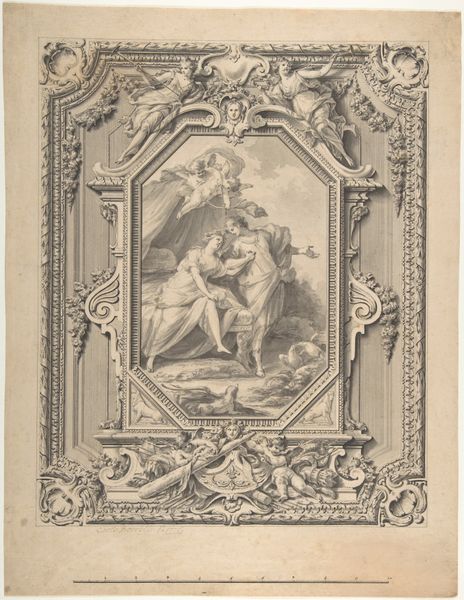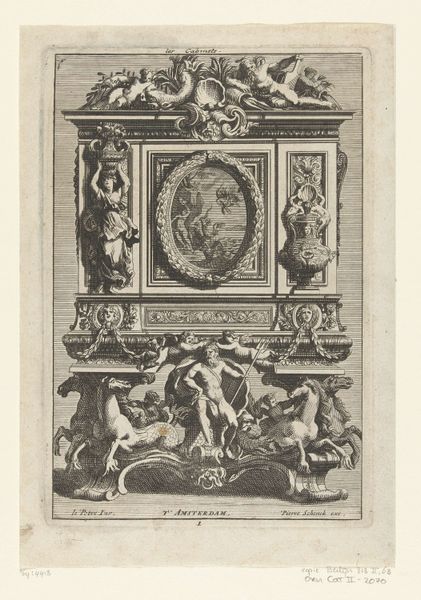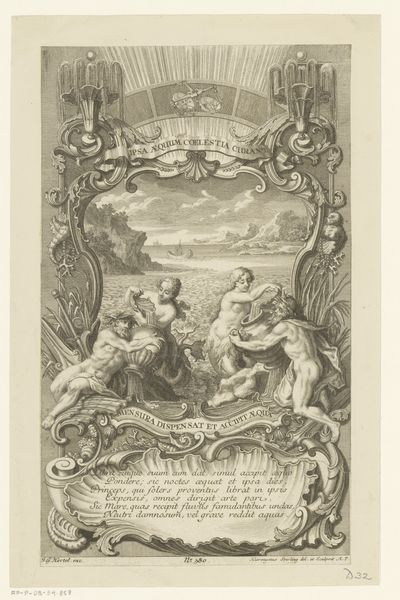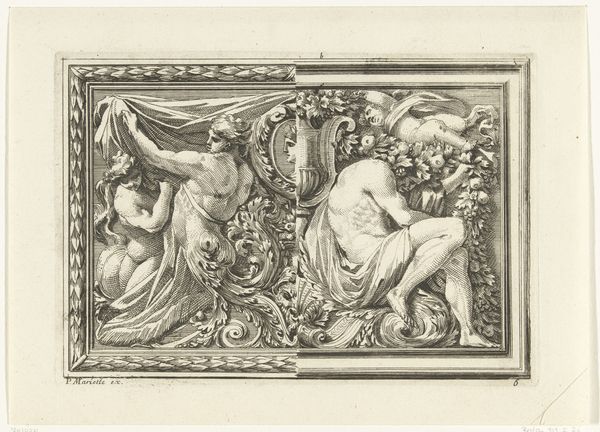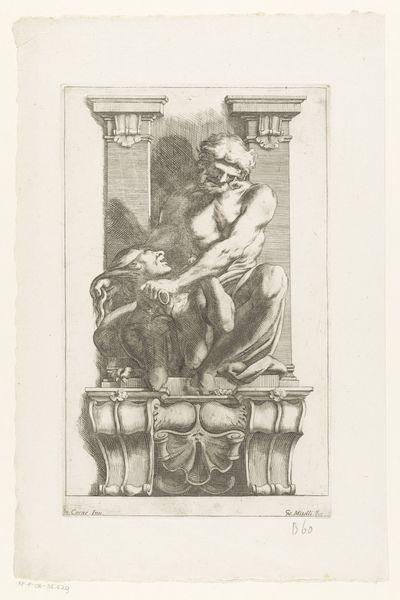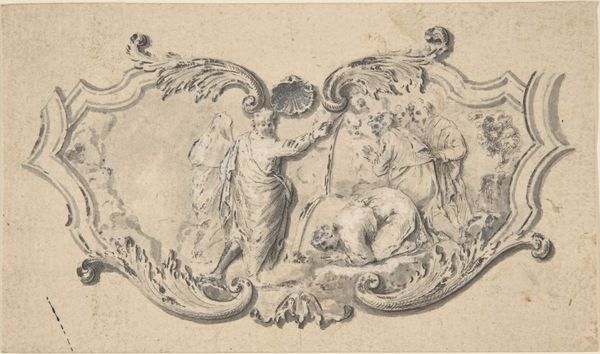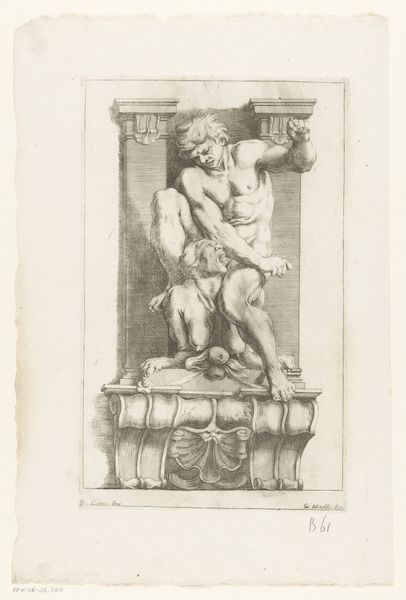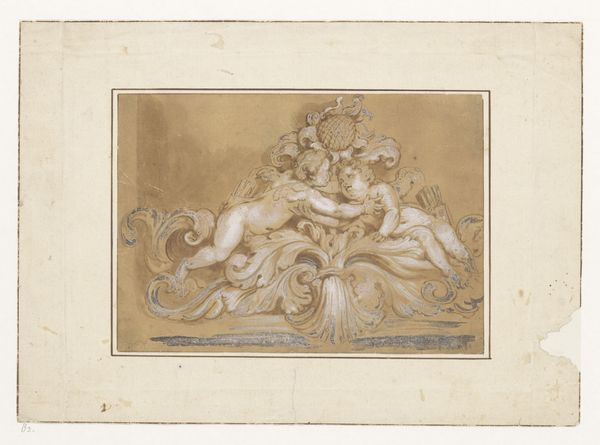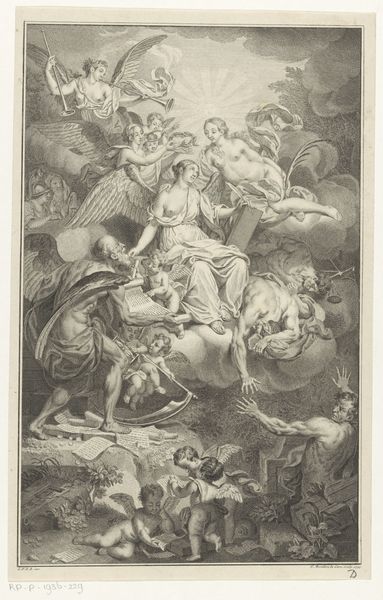
drawing, pen
#
drawing
#
allegory
#
neoclassicism
#
figuration
#
pen
#
academic-art
Dimensions: height 418 mm, width 290 mm
Copyright: Rijks Museum: Open Domain
Curator: At first glance, it has this eerie theatrical presence, like something designed for a play or a grand performance. What do you see? Editor: Well, we're looking at a drawing by Jean-Henri Jullien, probably created between 1866 and 1900. It's titled "Clock Supported by Four Women," and it presents precisely that: a clock face hovering above four classical figures rendered with great precision. The style definitely leans towards neoclassicism and Academic art, very formal and idealized. Curator: The "hovering" clock is interesting, I see it more as the force driving their movement, like it is sitting heavily on them while pushing them together, toward an unmentioned end. I wonder why a drawing, though? Not a painting or sculpture. Perhaps it's a design, a proposition. Editor: Good point. The pen-and-ink medium suggests this could be a preliminary study for something more monumental perhaps for a decorative clock meant for display. The four women, likely representing allegorical figures, certainly evoke strength and endurance in their support. In 19th-century art, the classical form represents permanence, order, virtue – but they are women so how might the sculptor or society undermine that? Curator: Endurace, and in the round. I’m sensing anxiety under all the stoicism; their draped robes seems like ropes binding them together! Plus, the whole composition, with its intricate ornamentation, feels very controlled, almost claustrophobic. I wonder how folks saw gender at the time the art was made—did they feel sympathy? Impatience? Editor: That control definitely mirrors the academic ideals of the time—perfected form and structured allegories meant to instill particular values and project social stability during periods of huge shifts and massive industrial restructuring of daily life. Curator: But, beneath it all, something about it also whispers…of rebellion? Like these women are *choosing* to support that clock, or are perhaps compelled against their will. It certainly raises questions about power, responsibility, and perhaps the burdens placed upon idealized images of womanhood! It makes the viewer question the power and source of these feelings. Editor: Absolutely. It prompts us to consider whose values were being upheld by these grand displays. Curator: For me, the clock is both an instrument, a tool, and a heavy yoke or a frame holding time back. Editor: And for me, I can look at this piece in its historical context as a social display, questioning power but admiring craft all the same.
Comments
No comments
Be the first to comment and join the conversation on the ultimate creative platform.
